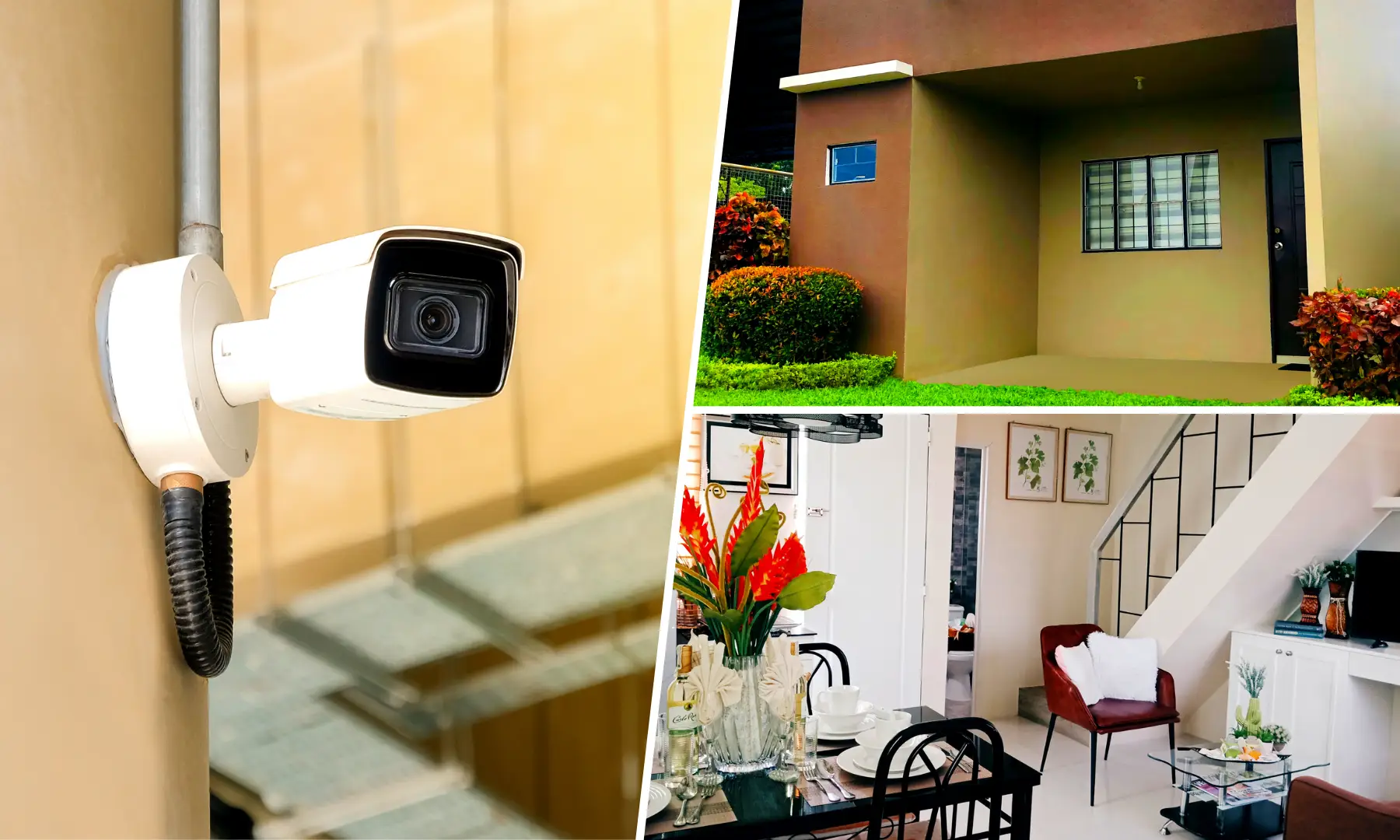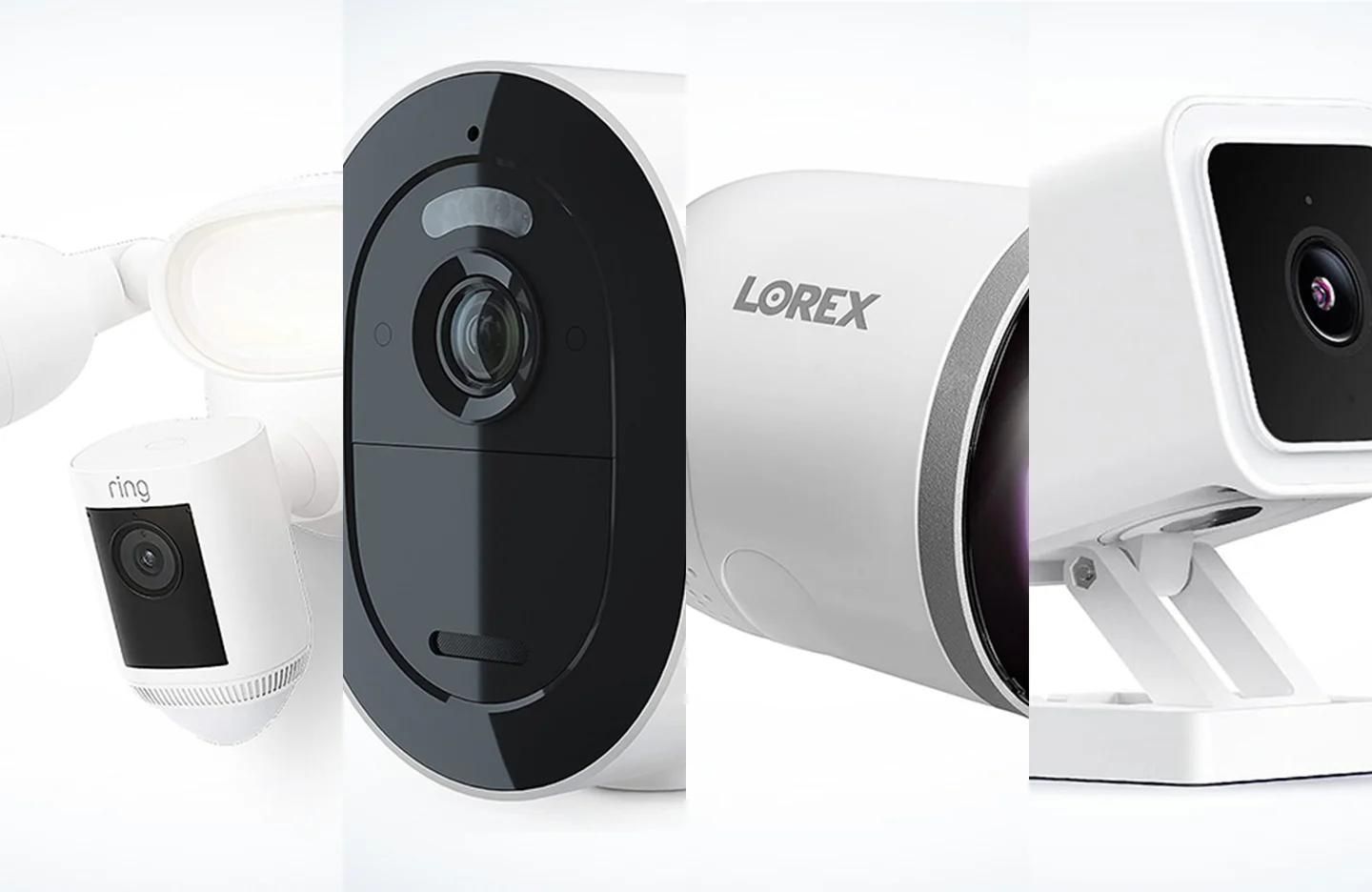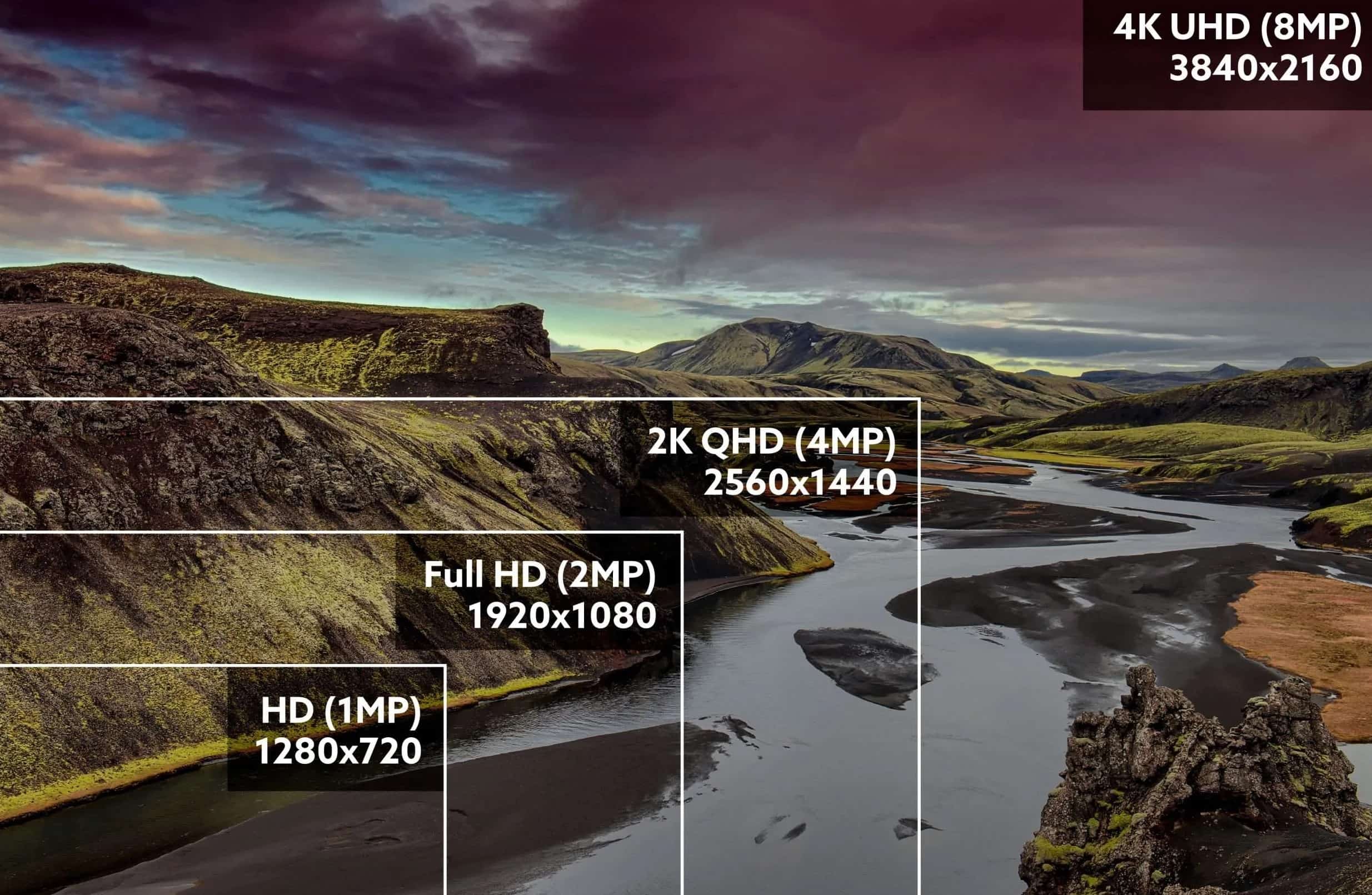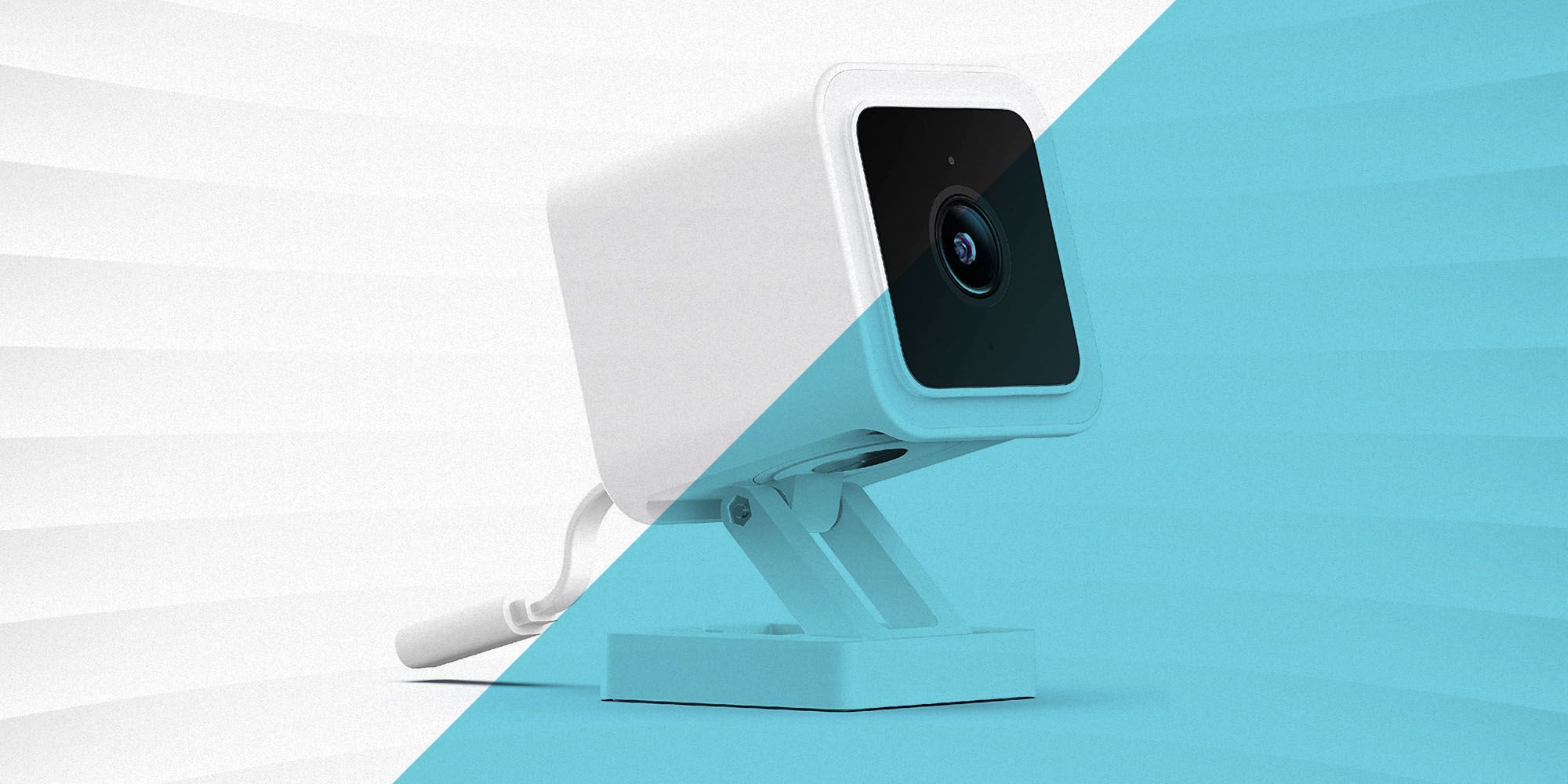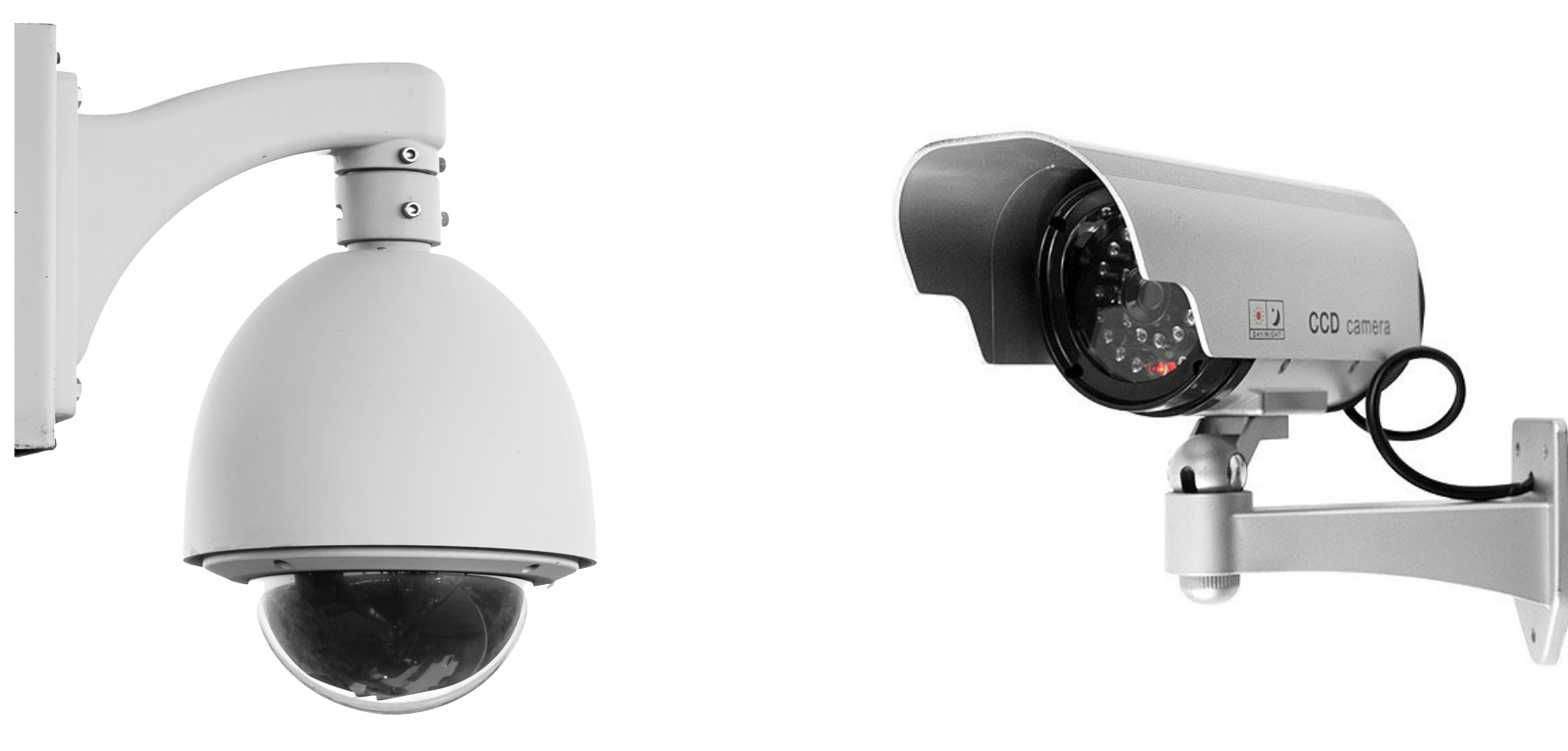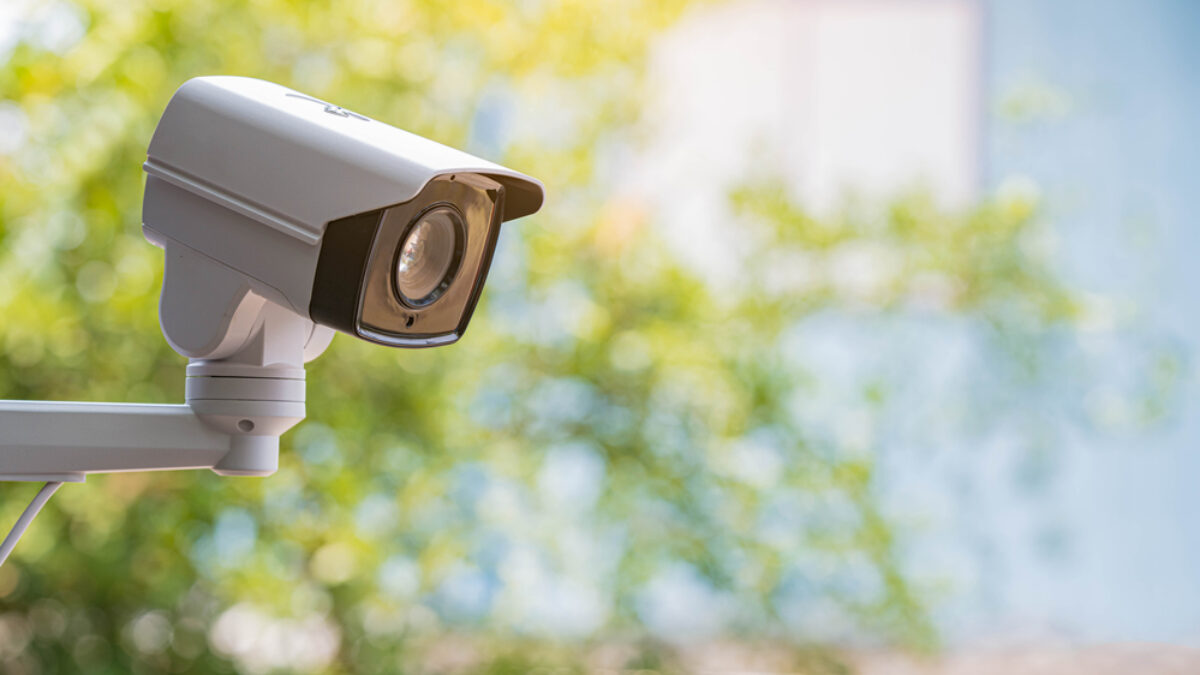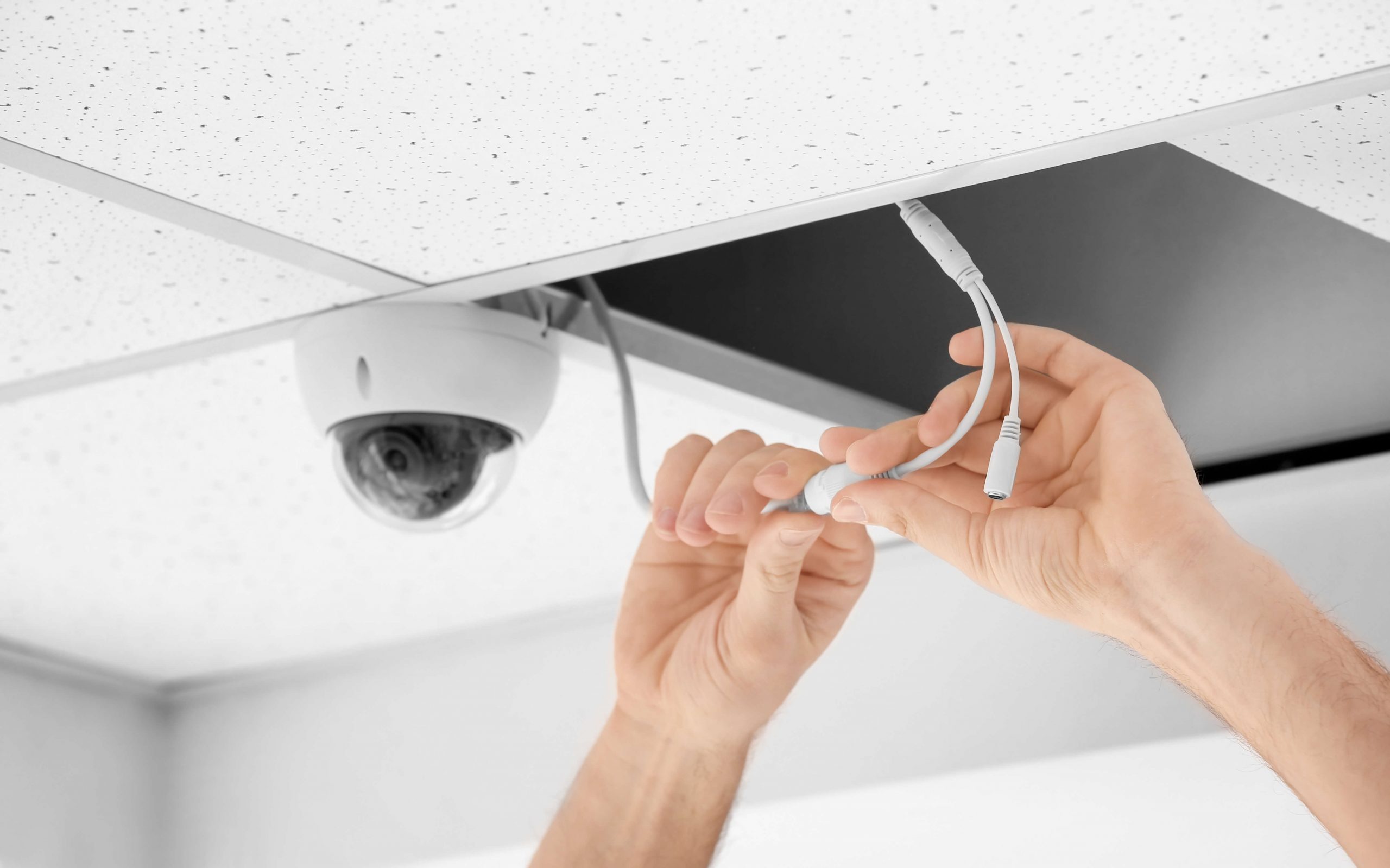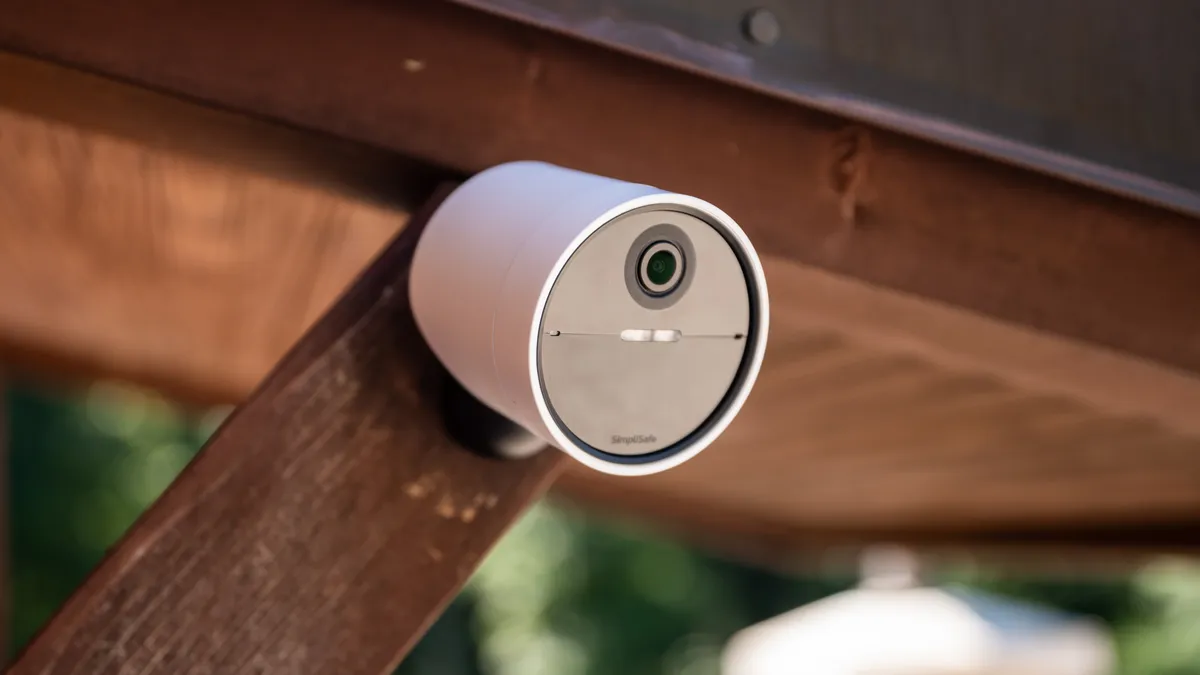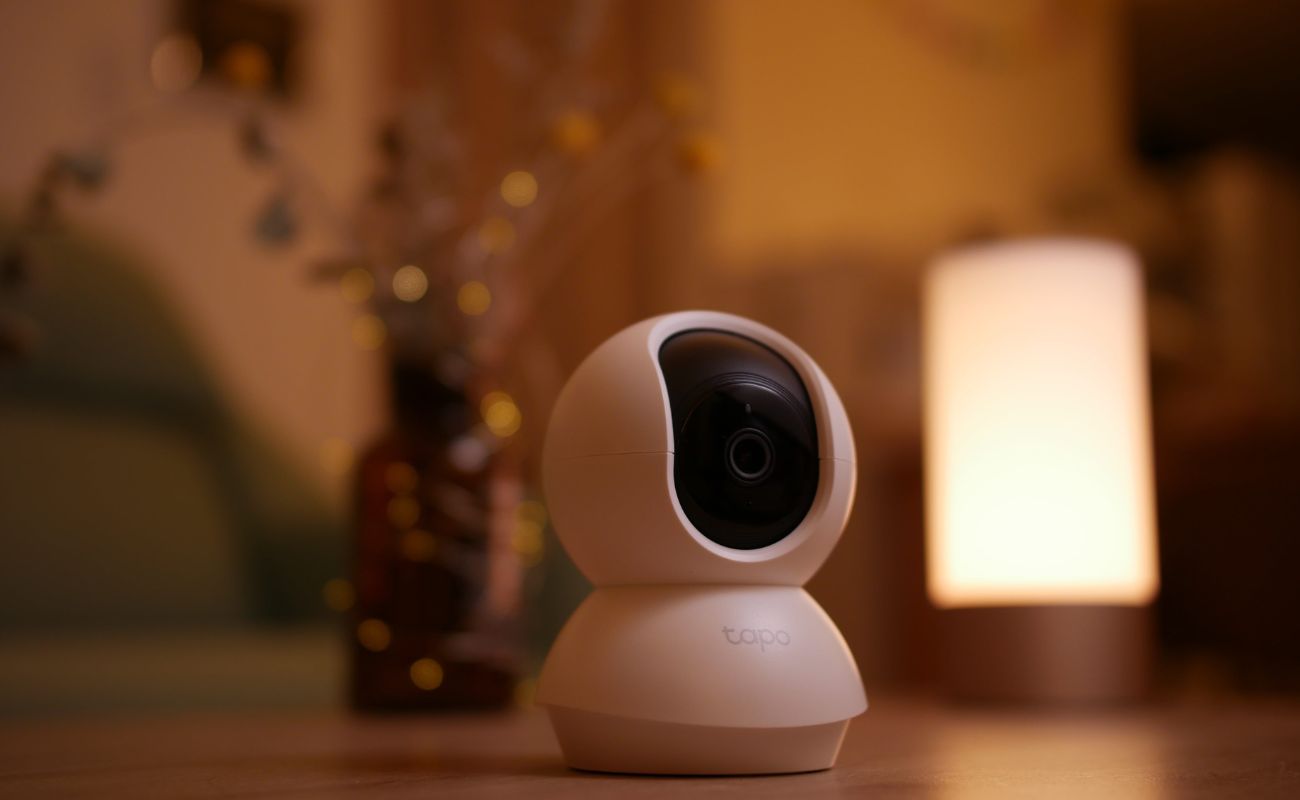Home>Home Security and Surveillance>What Is The Best Security Camera System For Business
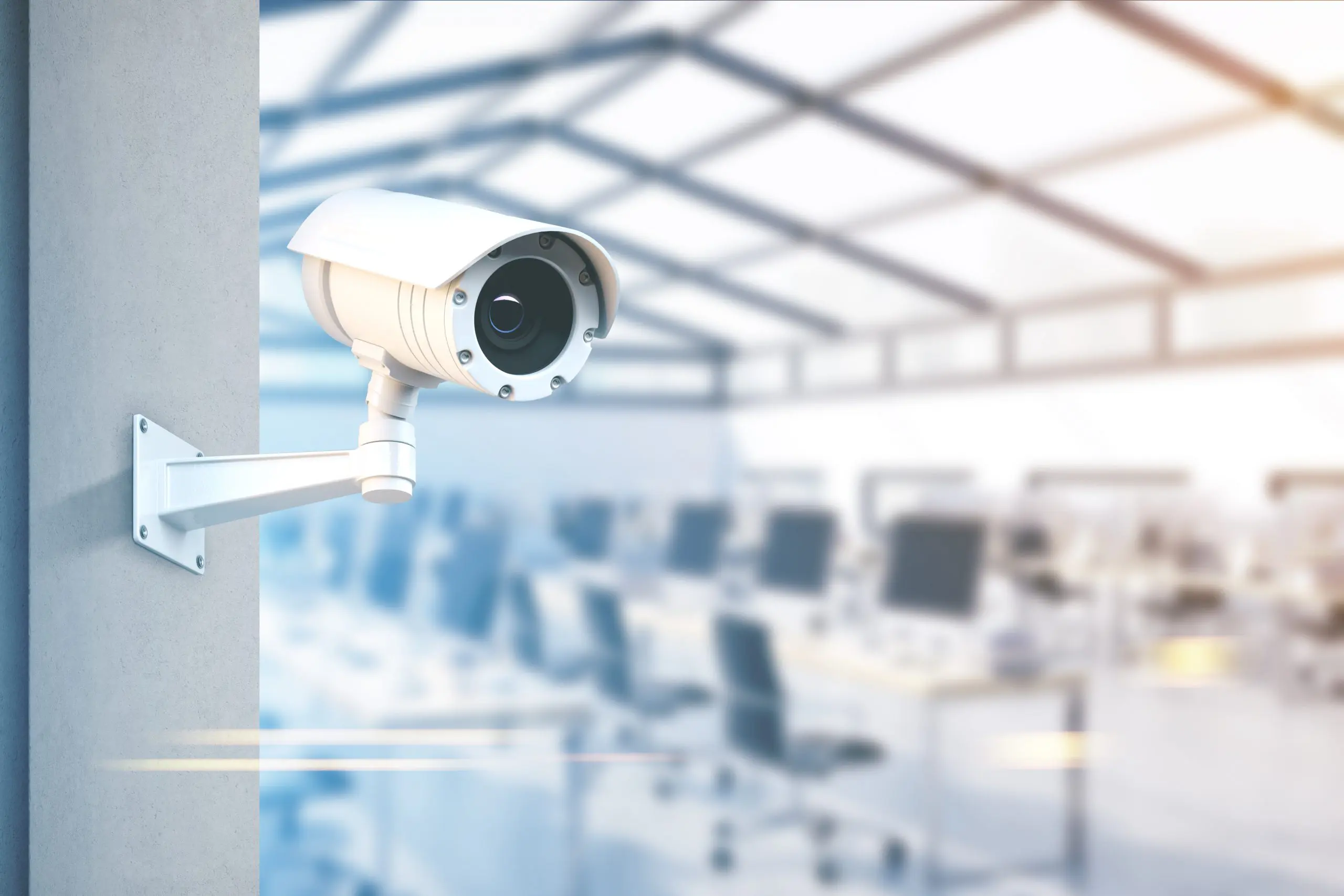

Home Security and Surveillance
What Is The Best Security Camera System For Business
Modified: November 1, 2024
Looking for the best security camera system for your business? Discover top home security and surveillance options to keep your business safe and secure.
(Many of the links in this article redirect to a specific reviewed product. Your purchase of these products through affiliate links helps to generate commission for Storables.com, at no extra cost. Learn more)
Introduction
When it comes to protecting your business, having a reliable and effective security camera system is essential. Whether you own a small retail store or a large corporate office, investing in the right surveillance technology can significantly enhance the safety and security of your premises.
With so many options available in the market, it can be overwhelming to choose the best security camera system for your business. From wired to wireless, indoor to outdoor, and high-definition to IP cameras, each system has its own set of features and advantages. Understanding these factors can help you make an informed decision and select the system that meets your specific needs.
In this article, we will explore the different types of security camera systems available and discuss the key factors to consider when choosing the right one for your business. We will also delve into the various features, such as night vision capability, remote monitoring, storage options, and advanced analytics, that can enhance the functionality and effectiveness of your surveillance system. Additionally, we will touch upon the installation and maintenance considerations, as well as the cost implications associated with these systems.
By the end of this article, you will have a comprehensive understanding of the factors to consider when selecting a security camera system for your business, enabling you to make an informed decision in order to safeguard your property and assets.
Key Takeaways:
- Choosing the right security camera system for your business involves considering factors like location, resolution, and low-light performance. Understanding these factors helps in making an informed decision to safeguard your premises.
- Proper installation and regular maintenance are crucial for the effectiveness of a security camera system. It’s important to balance the cost of equipment, installation, and ongoing maintenance to ensure a cost-effective investment in security.
Factors to Consider When Choosing a Security Camera System
When selecting a security camera system for your business, it is important to evaluate certain factors to ensure that you choose a system that meets your specific requirements. By considering these factors, you can make an informed decision and invest in a surveillance solution that provides reliable and effective monitoring. Here are some key factors to consider:
- Location: Assess the layout and size of your premises to determine the number and placement of cameras required. Consider both indoor and outdoor surveillance needs, and identify areas that are more vulnerable to intrusion or theft.
- Resolution: The camera’s resolution determines the quality of the footage. Higher-resolution cameras capture more detail, making it easier to identify faces and objects. 1080p or 4K resolution cameras are recommended for capturing clear and crisp images.
- Field of View: The field of view refers to the area that a camera can capture. Determine the specific angle of coverage needed for each camera, taking into consideration the distance and width of the area to be monitored.
- Low-Light Performance: If you require surveillance in low-light conditions, consider cameras with superior low-light performance or built-in infrared LEDs for night vision capabilities. This ensures that your cameras can capture clear footage even in challenging lighting conditions.
- Camera Type: There are various types of security cameras available, such as dome cameras, bullet cameras, and PTZ (pan-tilt-zoom) cameras. Each type has its own advantages and is suitable for different surveillance needs. Consider the specific features and functionalities offered by each camera type to determine the most suitable option for your business.
- Power Source: Decide whether you prefer wired cameras that require a power source or wireless cameras that operate on batteries or solar power. Wired cameras offer a more reliable connection and continuous power supply, while wireless cameras provide flexibility in terms of installation.
- Scalability: Consider the future growth and expansion of your business. Choose a system that can easily accommodate additional cameras if needed, allowing you to scale up your surveillance capabilities as your business expands.
- Integration: Evaluate the compatibility of the security camera system with other existing security systems or automation platforms, such as access control systems or alarm systems. Integration can provide a more comprehensive and centralized security management solution.
By considering these factors, you can narrow down your options and choose a security camera system that aligns with your specific needs and provides the level of surveillance and protection required for your business.
Types of Security Camera Systems
When it comes to security camera systems, there are various types available in the market. Each type offers different features, advantages, and installation requirements. Understanding the different types can help you choose the system that best suits your business needs. Here are the most common types of security camera systems:
- Wired Security Camera Systems: Wired systems require a physical connection between the camera and the recording device. They use cables, such as coaxial or Ethernet cables, for power and video transmission. These systems offer a stable and reliable connection. However, the installation process can be more complex and may require professional assistance.
- Wireless Security Camera Systems: Wireless systems operate without the need for cables. They use Wi-Fi or other wireless technologies to transmit video and audio signals to a recording device or a cloud-based storage solution. Wireless systems are easier to install and provide more flexibility in terms of camera placement. However, they may be susceptible to signal interference and have limited range compared to wired systems.
- IP Security Camera Systems: IP (Internet Protocol) camera systems are digital cameras that transmit data over a network. They are connected to the internet or a local network, allowing remote access and control. IP cameras offer high-resolution video quality and advanced features such as motion detection and analytics. They are suitable for businesses that require superior image quality and flexibility.
- HD Security Camera Systems: HD (High Definition) camera systems provide high-resolution video quality, typically 1080p or higher. They capture sharp and clear images, making it easier to identify details and faces. HD systems are ideal for businesses that prioritize image clarity and require accurate visual evidence.
- Indoor vs. Outdoor Security Camera Systems: Security camera systems are designed for both indoor and outdoor use. Indoor cameras are usually smaller, discreet, and more lightweight. They are suitable for monitoring specific areas within your business premises, such as offices, lobbies, or storage rooms. On the other hand, outdoor cameras are built to withstand harsh weather conditions and provide surveillance for the exterior of your property. They are designed to be weatherproof, vandal-resistant, and can capture footage in wider areas.
Each type of security camera system has its own advantages and considerations. Assess your specific surveillance needs, the environment in which the cameras will be installed, and the level of control and access required to determine the best type of system for your business.
Wired Security Camera Systems
Wired security camera systems are a popular choice for businesses looking for a reliable and stable surveillance solution. These systems require a physical connection between the cameras and the recording device, such as a Digital Video Recorder (DVR) or Network Video Recorder (NVR). Here are some key features and considerations of wired security camera systems:
- Stable Connection: Wired systems provide a consistent and stable connection between the cameras and the recording device. This ensures that there is no loss of video signal or lag in transmission, resulting in reliable and continuous monitoring.
- Power and Video Transmission: Wired systems use cables, such as coaxial or Ethernet cables, to transmit both power and video signals. This eliminates the need for separate power sources for each camera and simplifies the installation process.
- Flexible Placement: With wired systems, you have more flexibility in terms of camera placement. As long as there is a cable connection available, you can install the cameras in various locations, including hard-to-reach areas or areas with limited Wi-Fi coverage.
- Higher Resolution: Wired systems support higher resolution cameras, such as HD or 4K cameras, allowing you to capture clear and detailed images. This can be particularly beneficial when you need to identify faces or objects in the footage.
- Professional Installation: While wired systems offer flexibility in terms of camera placement, they often require professional installation due to the complexities involved in cable routing and connections. Professional installation ensures that the system is set up correctly and optimally.
- Protection Against Interference: Wired systems are less susceptible to signal interference compared to wireless systems, as they do not rely on Wi-Fi or other wireless technologies. This makes them a reliable option, especially in areas with high interference or congestion.
Despite their advantages, it’s important to consider some potential drawbacks of wired security camera systems. The installation process can be more complex and time-consuming, requiring the expertise of a professional installer. Additionally, the physical cables can limit the flexibility for future camera repositioning or expansion.
Overall, wired security camera systems are a dependable choice for businesses that prioritize stability, higher resolution, and reliable power and video transmission. They are suitable for both indoor and outdoor surveillance and provide peace of mind knowing that your business premises are well-monitored and protected.
Wireless Security Camera Systems
Wireless security camera systems have gained popularity in recent years due to their convenience and ease of installation. These systems operate without the need for physical cables, using wireless technologies such as Wi-Fi or Bluetooth for data transmission. Here are some key features and considerations of wireless security camera systems:
- Easy Installation: Wireless systems are relatively easy to install compared to wired systems. Without the need for cables, you can quickly set up the cameras in desired locations and connect them to a wireless receiver or a recording device. This makes wireless systems a flexible option for businesses that require a hassle-free installation process.
- Flexible Placement: With wireless security cameras, you have the freedom to place them in various locations without worrying about cable limitations. This flexibility allows you to adapt your surveillance coverage as needed, whether you want to monitor different areas or easily move the cameras to new positions.
- Expandability: Wireless systems typically offer the capability to add additional cameras to expand your surveillance coverage. This scalability allows you to easily increase the number of cameras as your business grows or your security needs change.
- Remote Access and Monitoring: Wireless security camera systems often come with mobile apps or software that enable remote access and monitoring. This means you can view live feeds or playback recorded footage from your cameras using a smartphone, tablet, or computer from anywhere with an internet connection. This feature provides flexibility and convenience, especially for business owners who are frequently on the go.
- Signal Interference: One potential challenge with wireless systems is the possibility of signal interference. Wi-Fi signals can be affected by various factors such as distance, physical barriers, or other electronic devices operating in the same frequency range. It’s important to ensure that your wireless cameras are placed within a suitable range of the wireless router and that you have a strong and stable Wi-Fi connection in the areas where the cameras are installed.
- Battery Life: Wireless cameras rely on batteries for power, so it’s crucial to consider the battery life and power management features of the cameras. High-quality wireless cameras often have longer battery life and advanced power-saving modes that help conserve energy while providing sufficient monitoring coverage. Regular monitoring and maintenance of battery levels are essential to ensure uninterrupted surveillance.
Wireless security camera systems offer convenience, flexibility, and remote access capabilities that make them appealing for various businesses. However, it’s important to consider factors such as signal interference, battery life, and Wi-Fi coverage to ensure reliable and effective surveillance for your business.
IP Security Camera Systems
IP (Internet Protocol) camera systems have revolutionized the world of surveillance with their advanced technology and network connectivity. These digital cameras transmit data over a network, such as the internet or a local network, making them highly versatile and flexible. Here are some key features and considerations of IP security camera systems:
- High-Resolution Video: IP cameras are capable of capturing high-resolution video, ranging from 1080p to 4K Ultra HD. This results in clear and detailed footage, allowing for easy identification of faces, objects, or incidents. The superior image quality makes IP camera systems well-suited for businesses that require accurate visual evidence.
- Flexibility and Scalability: IP camera systems offer great flexibility and scalability. Multiple cameras can be connected to a network, allowing for easy expansion and additional coverage as your business grows. It is also possible to integrate IP cameras with other security systems or automation platforms, creating a comprehensive and centralized security solution.
- Remote Access and Monitoring: IP cameras can be accessed remotely through a web browser or dedicated mobile apps. This provides business owners and security personnel the ability to view live feeds, playback recorded footage, and manage camera settings from anywhere with an internet connection. Remote access and monitoring enhance convenience and allow for real-time security management.
- Advanced Features: IP cameras often come equipped with advanced features such as motion detection, video analytics, and intelligent image processing. These features can include facial recognition, object tracking, and virtual tripwires, providing enhanced security and automation capabilities. Such advanced features enable proactive monitoring and alerting, making IP camera systems more than just a surveillance tool.
- Network Bandwidth: When implementing an IP camera system, it’s important to consider the network bandwidth requirements. High-resolution IP cameras can generate substantial amounts of data, especially when recording continuously or at high frame rates. Ensuring that your network infrastructure can handle the data flow is crucial to maintain smooth video transmission and prevent network congestion.
- Power over Ethernet (PoE): Many IP cameras support Power over Ethernet (PoE) technology, allowing for power and data transmission over a single Ethernet cable. This simplifies the installation process, as separate power sources are not required for each camera. PoE eliminates the need for additional power outlets near the camera locations and offers greater flexibility in camera placement.
IP security camera systems offer superior image quality, advanced features, and the flexibility of network connectivity. They are an excellent choice for businesses that require high-resolution video, advanced analytics, and centralized security management. However, proper planning, network infrastructure, and considerations for bandwidth and power requirements are necessary to ensure optimal performance and reliability.
HD Security Camera Systems
HD (High Definition) security camera systems have become the standard in modern surveillance technology, providing high-resolution video quality to capture clear and detailed images. These systems offer superior image clarity and enable businesses to monitor their premises with precision. Here are some key features and considerations of HD security camera systems:
- Resolution: HD cameras capture video with a resolution of 1080p (Full HD) or higher, resulting in clear and sharp images. The high-resolution footage allows for easy identification of individuals and objects, providing crucial details for security investigations or evidence.
- Detailed Capturing: With HD security camera systems, you can capture fine details such as facial features, license plate numbers, or small details in the environment. This level of detail can be invaluable in identifying potential threats, suspicious activities, or incidents that occur on your business premises.
- Improved Clarity: HD cameras provide enhanced clarity, even when zooming in on recorded footage. This allows for detailed analysis and identification of critical information, providing valuable insights for security purposes. Whether you need to monitor a wide area or focus on specific details, HD cameras deliver exceptional image quality.
- Wide Dynamic Range (WDR): Many HD cameras come equipped with Wide Dynamic Range technology, which helps overcome challenges posed by uneven lighting conditions. This feature allows the camera to capture detail in both bright and dark areas of the scene, ensuring that important image details are not lost due to intense backlight or shadows.
- Low-Light Performance: HD cameras often feature advanced low-light capabilities, allowing them to capture high-quality video even in low-light conditions. Some cameras have built-in infrared LEDs or light sensors to automatically switch to night vision mode, ensuring clear footage in complete darkness.
- Compatibility: HD security camera systems are compatible with various recording devices, such as Digital Video Recorders (DVRs), Network Video Recorders (NVRs), or cloud-based storage solutions. This flexibility allows businesses to choose the most suitable recording and storage option based on their needs and preferences.
HD security camera systems are highly recommended for businesses that require superior image quality and want to capture precise details for security purposes. Whether it’s monitoring entry points, identifying individuals, or capturing incidents, HD cameras deliver exceptional clarity and provide valuable visual evidence. However, it’s essential to consider factors such as available storage capacity, bandwidth requirements, and compatibility with your recording devices to ensure optimal performance and a seamless surveillance experience.
Indoor vs. Outdoor Security Camera Systems
When it comes to security camera systems, it’s important to consider whether you need cameras specifically designed for indoor or outdoor use. Both types have their own unique features and considerations. Understanding the differences between indoor and outdoor security cameras can help you make an informed decision based on your business’s specific surveillance needs. Here are some key factors to consider:
Indoor Security Camera Systems
Indoor security camera systems are designed to monitor the interior of your business premises. Here are some features and considerations specific to indoor cameras:
- Discreet Design: Indoor cameras are often designed to be small and discreet, blending seamlessly into the environment. This makes them less noticeable and helps maintain a non-intrusive atmosphere within your business premises.
- Wider Field of View: Indoor cameras typically have a wider field of view, allowing them to cover larger areas such as office spaces, hallways, or common areas. This helps reduce the number of cameras needed to monitor a given space.
- Resolution and Image Quality: Indoor cameras are available in various resolutions, including HD and even 4K. Choose a resolution that aligns with your specific monitoring requirements, keeping in mind the level of detail you need to capture inside your premises.
- Power Source and Connectivity: Indoor cameras are usually connected to a power source through electrical outlets. They may also support Wi-Fi connectivity, making them easier to install and configure.
- Privacy Concerns: It’s important to consider privacy concerns when installing indoor cameras. Be transparent with your employees and customers about the surveillance system to maintain trust and adhere to privacy regulations. Proper placement and clear signage can help address privacy concerns.
Outdoor Security Camera Systems
Outdoor security camera systems are designed to monitor the exterior of your business premises. Here are some features and considerations specific to outdoor cameras:
- Weatherproof and Vandal-Resistant: Outdoor cameras are built to withstand harsh weather conditions, including rain, snow, and extreme temperatures. They are also designed to be vandal-resistant, protecting them from tampering or damage.
- Night Vision Capability: Since outdoor areas can have limited lighting, most outdoor cameras come with built-in infrared LEDs or light sensors to provide clear footage even in low-light or no-light conditions. This ensures that your outdoor areas are monitored 24/7.
- Wide Angle Coverage: Outdoor cameras often have a wide-angle lens to capture a larger field of view, allowing you to monitor expansive outdoor areas such as parking lots, entrances, or loading docks.
- Long-Range Visibility: Outdoor cameras are designed to capture clear images even at longer distances. This enables you to monitor areas that are further away from the camera location, providing extended visibility and security coverage.
- Protection from Environmental Factors: Outdoor cameras are designed to withstand environmental factors such as dust, wind, and humidity. Look for cameras with an appropriate IP rating to ensure they can withstand the specific outdoor conditions in your location.
By understanding the specific features and considerations of indoor and outdoor security camera systems, you can choose the appropriate cameras to effectively monitor both the interior and exterior of your business premises. Combining indoor and outdoor cameras provides comprehensive surveillance coverage, helping to ensure the safety and security of your business.
Night Vision Capability
When it comes to security camera systems, having night vision capability is essential for businesses that require around-the-clock surveillance. Night vision technology allows cameras to capture clear and detailed images in low-light or even complete darkness. Here are some key aspects to consider regarding night vision capability in security camera systems:
- Infrared (IR) Illumination: Many security cameras with night vision capability are equipped with infrared (IR) illuminators. These built-in IR LEDs emit infrared light that is invisible to the human eye but can be detected by the camera’s image sensor. The IR light illuminates the area, allowing the camera to capture clear footage even in complete darkness.
- Range and Distance: Night vision cameras have different ranges of visibility, depending on the number and power of the IR LEDs. Some cameras can provide visibility up to a few meters, while others can cover larger areas of up to 30 meters or more. Consider the specific area you need to monitor during nighttime hours and choose a camera with an appropriate night vision range.
- Image Clarity: Night vision cameras vary in terms of image clarity. Look for cameras with higher resolution to ensure clear and detailed images in low-light conditions. Higher resolutions, such as 1080p or 4K, allow for better visibility of objects and individuals at night.
- Switching Modes: Many cameras with night vision capability automatically switch to night mode when the ambient light falls below a certain level. This ensures continuous surveillance without manual adjustments. Some cameras also offer customizable settings to adjust the sensitivity or range of the night vision mode based on the specific needs of your business.
- Overcoming Glare and Reflection: In outdoor environments, night vision cameras need to deal with potential issues like glare from streetlights or reflections from nearby surfaces. Look for cameras with features such as Wide Dynamic Range (WDR) or Backlight Compensation (BLC) that can help overcome these challenges and provide clear and balanced images in low-light conditions.
- Data Storage Considerations: Night vision cameras can generate large amounts of data due to the increased sensitivity required in low-light scenarios. Ensure that your chosen storage solution, whether it’s a local device or cloud-based storage, can handle the additional storage requirements for night vision footage.
Having security cameras with night vision capability is crucial for businesses that need to monitor their premises during nighttime hours or in low-light conditions. Whether it’s detecting unauthorized activity, monitoring access points, or maintaining security in poorly lit areas, night vision cameras provide the necessary visibility and surveillance coverage. Consider the specific requirements of your business and choose cameras with reliable and high-quality night vision capabilities to ensure the safety and security of your premises.
Remote Monitoring and Mobile Access
Remote monitoring and mobile access are essential features of modern security camera systems, enabling businesses to monitor their premises and access camera feeds anytime, anywhere. These features provide convenience, flexibility, and real-time access to surveillance footage. Here are the key aspects to consider regarding remote monitoring and mobile access in security camera systems:
- Mobile Apps: Many security camera systems come with dedicated mobile apps that allow you to view live camera feeds, playback recorded footage, and manage camera settings from your smartphone or tablet. These apps provide a user-friendly interface and intuitive controls, making it easy to access and control your cameras from the palm of your hand.
- Real-Time Notifications: With mobile access, you can receive real-time notifications when motion is detected or when specific events occur. These notifications can be sent directly to your mobile device, keeping you informed of any potential security breaches or unusual activities in real time.
- Remote Playback and Recording: Mobile access allows you to remotely access recorded footage from your security camera system. You can review footage, search for specific events or timestamps, and even download video clips directly to your mobile device for further analysis or sharing with relevant personnel.
- Multiple Camera Viewing: Mobile apps often support multi-camera viewing, allowing you to monitor multiple cameras simultaneously on a single screen. This feature is particularly helpful for businesses with a large number of cameras or distributed locations, as it provides a comprehensive overview without the need to switch between individual camera feeds.
- Geolocation and Geo-Fencing: Some mobile apps offer geolocation and geo-fencing capabilities. Geolocation allows the app to automatically detect your location and display cameras nearest to you, providing quick access to relevant feeds. Geo-fencing allows you to set up virtual boundaries, and when a camera detects activity within those boundaries, you receive an alert on your mobile device.
- Integration with Other Systems: Mobile access can often integrate with other security systems or automation platforms, such as access control systems or alarm systems. This integration allows for centralized management and control of various security components, enhancing overall security and providing a seamless user experience.
Remote monitoring and mobile access give you the flexibility to monitor your business premises from anywhere and at any time. Whether you’re traveling, off-site, or simply want to keep an eye on your business operations, these features provide convenience and peace of mind. Consider the specific mobile access capabilities offered by the security camera system you choose, ensuring that it aligns with your business needs and provides the necessary remote monitoring functionality.
Storage Options for Security Camera Systems
Choosing the right storage option for your security camera system is crucial for effectively managing and storing surveillance footage. The storage option you select will depend on factors such as retention period, storage capacity, accessibility, and budget. Here are some key storage options to consider:
- Local Storage: Local storage involves recording and storing surveillance footage on-site, typically using a Digital Video Recorder (DVR) or Network Video Recorder (NVR). Local storage provides immediate access to footage and ensures that you have full control over the storage infrastructure. Depending on the capacity of the storage device, you can retain recorded footage for a certain period of time. However, it’s essential to consider the limitations of local storage, such as the physical capacity of the device and the risk of data loss in case of theft, damage, or failure of the storage device.
- Cloud Storage: Cloud storage is a popular option for businesses seeking off-site storage and remote access to surveillance footage. Cloud storage allows you to store recorded video in a secure, remote server accessible via the internet. With cloud storage, you can access footage from anywhere with an internet connection, providing convenience and flexibility. Cloud storage typically offers scalability, allowing you to expand storage capacity as needed. However, it’s important to consider factors such as subscription costs, internet bandwidth requirements, and the security measures implemented by the cloud storage provider to protect your data.
- Hybrid Storage: Hybrid storage options provide a combination of local and cloud storage. This approach allows you to store a certain amount of footage locally for immediate access and backup the rest to the cloud for remote access and long-term storage. Hybrid storage provides the benefits of both local and cloud storage, enabling faster retrieval of recent footage while ensuring secure off-site backup for long-term retention. However, it’s important to consider the costs associated with both local and cloud storage, as well as the management of data synchronization between the two.
- Network-Attached Storage (NAS): NAS devices are dedicated storage units connected to your network. They provide a centralized storage solution for surveillance footage and can be accessed by multiple cameras or devices simultaneously. NAS combines the benefits of both local and network storage, providing convenient access to recorded video and allowing for expansion of storage capacity as needed. However, it’s important to ensure that the NAS device has sufficient capacity to accommodate the amount of video data your cameras generate and that the network infrastructure can handle the data transfer requirements.
When selecting a storage option for your security camera system, consider factors such as retention period, storage capacity, scalability, accessibility, budget, and data security. Evaluate the specific needs and requirements of your business, and choose the storage option that aligns with those needs while providing flexibility, reliability, and ease of use. It’s also worth considering the local regulations and compliance requirements regarding video data storage for your industry or jurisdiction.
Cloud Storage vs. Local Storage
When it comes to storing surveillance footage for your security camera system, you have two primary options: cloud storage and local storage. Each option has its own advantages and considerations. Understanding the differences between cloud storage and local storage can help you make an informed decision based on your specific needs and requirements. Here’s a comparison of the two storage options:
Cloud Storage
Cloud storage refers to storing your surveillance footage on remote servers accessed via the internet. Here are some key features and considerations of cloud storage:
- Remote Access and Convenience: One of the major advantages of cloud storage is the ability to access your footage from anywhere with an internet connection. Cloud-based platforms often provide user-friendly web and mobile interfaces, allowing you to view live streams, playback recorded footage, and manage your cameras remotely.
- Scalability and Flexibility: Cloud storage offers scalability, allowing you to expand your storage capacity as needed. With cloud-based platforms, you can easily increase or decrease the amount of storage space based on your requirements, ensuring that you have enough room to store your surveillance footage without the need for physical hardware upgrades.
- Data Security and Redundancy: Reliable cloud storage providers implement robust security measures to protect your data. This includes encryption during transit and at rest, as well as redundant storage and backup systems to ensure data integrity. Cloud storage providers often have multiple geographically dispersed data centers, providing further protection against data loss due to disasters or hardware failures.
- Subscription Costs: Cloud storage is typically offered as a subscription service with varying pricing models based on the storage capacity and additional features. It’s important to consider the potential long-term costs associated with cloud storage, including storage fees, bandwidth usage, and any additional charges for advanced features or higher retention periods.
- Dependence on Internet Connectivity: Cloud storage relies heavily on a stable and reliable internet connection. If your internet connection goes down, you may not be able to access your footage or upload new recordings in real-time. Additionally, you need sufficient bandwidth to handle the continuous transmission of video data to the cloud.
Local Storage
Local storage involves recording and storing your surveillance footage on-site, typically using a Digital Video Recorder (DVR) or Network Video Recorder (NVR). Here are some features and considerations specific to local storage:
- Immediate Access and Control: With local storage, you have immediate access to your footage without the need for an internet connection. This allows for quick browsing and playback of recorded video, making it easier to locate specific events or incidents.
- No Dependence on Internet Connectivity: Local storage does not rely on an internet connection, making it a reliable option even in areas with unstable or limited internet access. You have full control over your storage infrastructure, and footage remains accessible even if your internet connection goes down.
- Physical Security of Data: With local storage, your surveillance footage is physically located on-site. This can provide a sense of control and security, as you have direct control over access to the storage devices. However, it’s important to consider the risk of data loss or theft in case of physical damage or theft of the storage device.
- Upfront Costs and Scalability: Local storage often requires an upfront investment in hardware, such as the DVR or NVR. The storage capacity of these devices may be limited, requiring hardware upgrades or additional devices as your storage needs increase. This can result in higher upfront costs and potential limitations in terms of scalability.
- Backup and Redundancy: Local storage requires implementing a backup strategy to ensure data redundancy. This typically involves regular backup schedules to external devices or servers. Without a proper backup plan, there is a potential risk of data loss due to hardware failure or damage to the storage device.
The choice between cloud storage and local storage depends on factors such as your specific surveillance needs, budget, accessibility requirements, and data security considerations. While cloud storage offers convenience, scalability, and remote access, it comes with subscription costs and dependence on internet connectivity. On the other hand, local storage provides immediate access, control, and no reliance on the internet, but requires upfront hardware investment and potential limitations in scalability. Assess your business requirements and weigh the advantages and considerations to determine which storage option aligns best with your needs.
Video Analytics and Advanced Features
Video analytics and advanced features are transforming security camera systems, allowing businesses to go beyond basic surveillance and harness the power of intelligent video analysis. These features enhance the functionality and effectiveness of security cameras, providing valuable insights and automating various security processes. Here are some key aspects to consider regarding video analytics and advanced features in security camera systems:
- Motion Detection: Motion detection is a fundamental video analytic feature that allows cameras to detect movement within their field of view. When motion is detected, the camera can trigger alerts or recording, providing real-time notifications and capturing important events for review.
- Facial Recognition: Facial recognition technology enables security cameras to identify and recognize individuals based on their facial features. This feature can be beneficial for access control purposes or for identifying people of interest or potential threats.
- License Plate Recognition (LPR): LPR technology enables cameras to capture and recognize license plate numbers. This feature is useful for monitoring parking areas, managing access to restricted areas, or assisting in vehicle tracking and investigations.
- Object Tracking: Object tracking allows cameras to follow moving objects or individuals as they traverse through the camera’s field of view. This feature is particularly helpful in situations where continuous monitoring of a specific target is necessary, such as monitoring suspicious activities or intruders.
- Virtual Tripwires and Perimeter Protection: Virtual tripwires and perimeter protection features enable cameras to detect when an object crosses a predefined virtual line or enters a specified area. This allows for proactive monitoring and instant alerts when someone breaches a designated perimeter or enters a restricted zone.
- People Counting: People counting technology uses advanced algorithms to accurately count the number of people entering or exiting a specific area. This feature is valuable for crowd management, occupancy monitoring, and optimizing staffing or resource allocation.
- Heat Mapping: Heat mapping technology generates visual representations of high-traffic areas within a surveillance scene. By analyzing these heat maps, businesses can gain insights into customer behavior, identify popular areas, optimize store layouts, and improve operational efficiency.
- Intelligent Alerts and Notifications: Advanced security camera systems can generate intelligent alerts and notifications based on specific criteria or predefined rules. For example, the system can send alerts when there is an object left unattended for an extended period or if someone enters a restricted area.
- Integration with Other Systems: Many advanced security camera systems integrate seamlessly with other security systems or automation platforms. This allows for centralized management and coordination of various security components, such as access control systems, alarms, or building automation systems.
Video analytics and advanced features empower businesses to move beyond simple video recording and monitoring, turning their security camera systems into intelligent and proactive tools. When choosing a security camera system, consider the specific analytics and advanced features offered by the cameras or software platforms. Assess your security objectives and determine which features align with your business needs, providing the level of automation and insights required to enhance your security operations.
Installation and Maintenance of Security Camera Systems
Proper installation and regular maintenance are essential for ensuring the effectiveness and longevity of your security camera system. A well-installed and well-maintained system will provide reliable surveillance and help maintain a safe and secure environment for your business. Here are some key aspects to consider regarding the installation and maintenance of security camera systems:
Installation
Professional installation is recommended for security camera systems to ensure proper setup and optimal performance. Here are some important considerations during the installation process:
- Camera Placement: Determining the correct camera placement is crucial for effective surveillance. Assess your premises and identify strategic locations that cover entry points, high-risk areas, or areas that require continuous monitoring. Consider factors such as lighting conditions, obstructions, and the camera’s field of view to maximize coverage.
- Camera Mounting: Proper mounting is essential to ensure stability and accurate positioning of the cameras. Depending on the camera type and location, mounting options can include wall mounts, ceiling mounts, or specialized mounts for poles or corners. Follow the manufacturer’s guidelines and use appropriate mounting hardware to ensure secure attachment.
- Cable Routing: Proper cable routing is important for both the power supply and video transmission cables. Conceal cables wherever possible to reduce vandalism risk and maintain a neat appearance. Use cable conduits or raceways to protect and route cables, minimizing potential damage or signal interference.
- Power Supply: Ensure that each camera has a reliable power source. For wired cameras, consider the proximity to power outlets or plan for appropriate wiring. For wireless cameras, ensure that the batteries are charged or establish a regular maintenance routine for battery replacement.
- Network Configuration: If you’re using IP cameras or network-based systems, ensure that the network infrastructure is capable of handling the data transmission requirements of the cameras. Proper network configuration, including setting up VLANs, subnetting, or Quality of Service (QoS) settings, can help optimize performance and enable smooth video streaming.
- Testing and Calibration: Once the installation is complete, thoroughly test each camera to ensure they are properly functioning and capturing clear images. Adjust camera settings such as focus, exposure, and sensitivity to optimize video quality and minimize false alarms from motion detection. Perform test recordings and playback to verify the effectiveness of the system.
Maintenance
Regular maintenance is necessary to ensure the ongoing performance and reliability of your security camera system. Here are some maintenance tasks to consider:
- Camera Cleaning: Regularly clean camera lenses and housings to remove dirt, dust, or other debris that could affect image quality. Use a soft, lint-free cloth and non-abrasive cleaning solutions to prevent damage to the camera components.
- Software and Firmware Updates: Stay updated with the latest software and firmware releases from the camera manufacturer. Regularly install updates to take advantage of new features, improvements in performance, or security patches that help protect against vulnerabilities.
- Storage Management: Monitor storage capacity and ensure that sufficient space is available for new recordings. Implement a retention policy to manage stored video footage effectively, removing outdated or unnecessary recordings to optimize storage usage.
- Regular System Checks: Conduct routine system checks to ensure that all cameras, cables, and connections are functioning properly. This can include checking for loose cables, identifying signs of wear or damage, and verifying that the cameras are capturing clear images and recording video as expected.
- Backup and Redundancy: Implement a backup strategy to ensure redundancy and protect against data loss. Regularly backup recorded footage to external storage devices or cloud-based platforms. Verify the backups periodically to ensure data integrity and accessibility.
- Proactive Troubleshooting: Monitor for any potential issues or malfunctions within the system. Actively address any alerts or error messages promptly to minimize downtime and prevent interruptions in surveillance.
By prioritizing professional installation and regular maintenance, you can ensure that your security camera system operates effectively and provides reliable surveillance. Following best practices for installation and maintenance will help maximize the lifespan of your system and maintain a safe and secure environment for your business.
When choosing a security camera system for your business, look for one with high-resolution video, remote access, motion detection, and night vision capabilities to ensure comprehensive coverage and easy monitoring.
Cost Considerations
Cost is an important factor to consider when implementing a security camera system for your business. Understanding the various cost components associated with security camera systems will help you make informed decisions and ensure that the system fits within your budget. Here are some key cost considerations to keep in mind:
Read more: What Is The Best Wireless Security Camera
Equipment:
The cost of the equipment is a significant consideration when implementing a security camera system. This includes the cameras, recording devices (DVR/NVR), cables, monitors, and other necessary hardware. The price can vary based on factors such as the camera type, resolution, brand, and additional features. Higher resolution and advanced features generally come with a higher price tag. It’s essential to strike a balance between your budget and the specific requirements of your business.
Installation:
Professional installation is recommended for security camera systems, particularly those that require complex wiring or network configurations. However, professional installation often comes at a cost. The installation fee depends on the number of cameras, the complexity of the system, the type of mounting required, and the labor involved. Obtain quotes from reputable installation companies and consider the expertise they bring to ensure a proper and efficient installation.
Storage:
The storage of recorded video footage can have cost implications. Cloud storage usually involves subscription-based pricing, with costs based on factors such as storage capacity, retention period, and additional features. Local storage, on the other hand, requires investment in hardware such as DVRs or NVRs. Consider the cost-effectiveness and scalability of both options based on your long-term storage requirements.
Maintenance and Support:
To maintain the performance and reliability of your security camera system, regular maintenance is required. This involves cleaning, software updates, system checks, and occasional repairs. Some manufacturers offer support and warranty packages for their equipment, while others may provide support at an additional cost. Consider the ongoing maintenance and support needs of your system and factor in the associated costs when planning your budget.
Read more: What Is The Best Wired Security Camera
Integration and Additional Features:
If you plan to integrate your security camera system with other security or automation systems, such as access control or alarm systems, there may be additional costs involved. Integration may require specific hardware, software licenses, or professional services to ensure seamless integration and functionality between the systems.
Operating Costs:
Don’t forget to factor in the ongoing operating costs of your security camera system. This includes electricity costs to power the cameras and recording devices, internet costs for network-based systems, and the cost of data transmission for cloud-based storage. It’s important to evaluate the energy efficiency of the equipment and consider strategies to optimize energy usage, such as motion-activated recording or using Power over Ethernet (PoE) for power-efficient wired cameras.
When considering the costs of a security camera system, it’s vital to balance your budgetary constraints with the specific security needs of your business. Cheaper options may not always provide the necessary features or reliability, while higher-priced systems may offer advanced functionalities that are unnecessary for your requirements. Conduct thorough research, obtain multiple quotes, and consult with experts to ensure you make a cost-effective investment that meets your security objectives.
Conclusion
Implementing a security camera system is a crucial step in safeguarding your business and protecting your assets. By considering the factors discussed in this article, you can make an informed decision and choose a system that meets your specific needs and requirements.
Factors such as location, resolution, field of view, low-light performance, and camera type should be carefully evaluated to ensure that the system will effectively monitor and secure your premises. Whether you opt for wired, wireless, IP, or HD cameras, each type offers its own advantages and considerations.
Additionally, the availability of features like night vision capability, remote monitoring, and storage options (such as cloud storage or local storage) should be assessed to select the most suitable solution for your business.
Advanced features like video analytics, facial recognition, license plate recognition, and object tracking can enhance the functionality of your system, providing valuable insights and automating security processes.
Proper installation and regular maintenance are essential to maximize the performance and longevity of your security camera system. Consider professional installation for optimum setup, and ensure regular cleaning, software updates, and system checks to keep the system operating smoothly.
While cost is an important consideration, it’s crucial to strike a balance between your budget and the specific requirements of your business. Evaluate equipment costs, installation fees, storage options, maintenance needs, and operating costs to make a cost-effective investment that meets your security objectives.
In conclusion, selecting and implementing a security camera system is a critical step in protecting your business. By carefully considering the factors discussed in this article, you can choose a system that provides reliable surveillance, enhances security, and brings peace of mind to your business operations.
Frequently Asked Questions about What Is The Best Security Camera System For Business
Was this page helpful?
At Storables.com, we guarantee accurate and reliable information. Our content, validated by Expert Board Contributors, is crafted following stringent Editorial Policies. We're committed to providing you with well-researched, expert-backed insights for all your informational needs.
